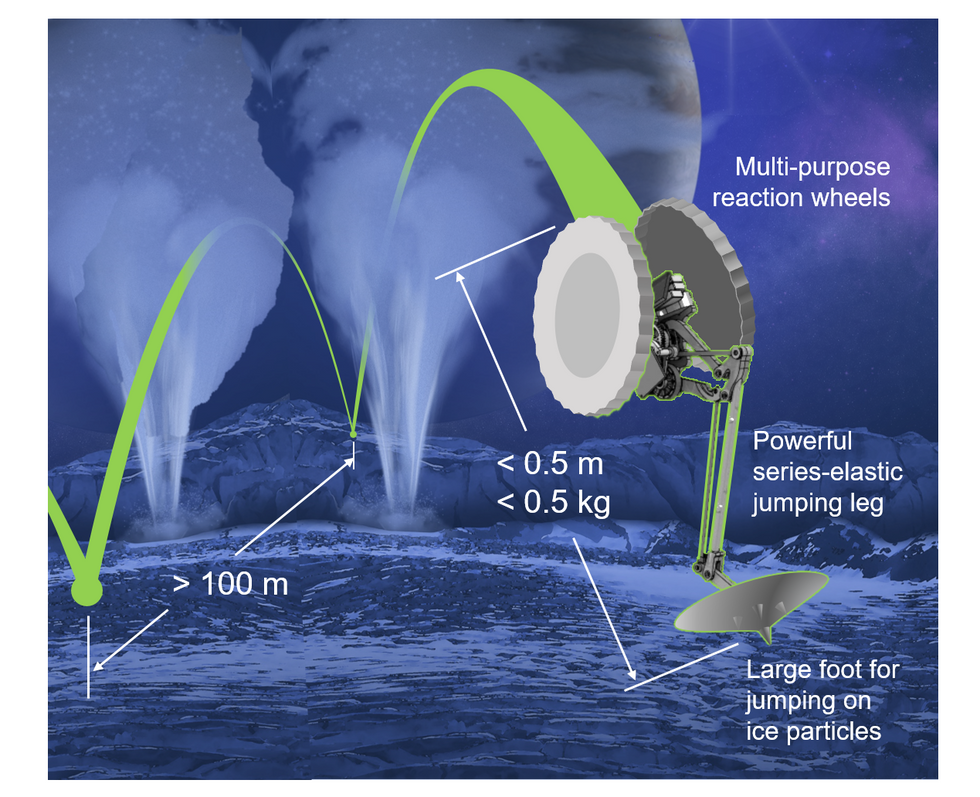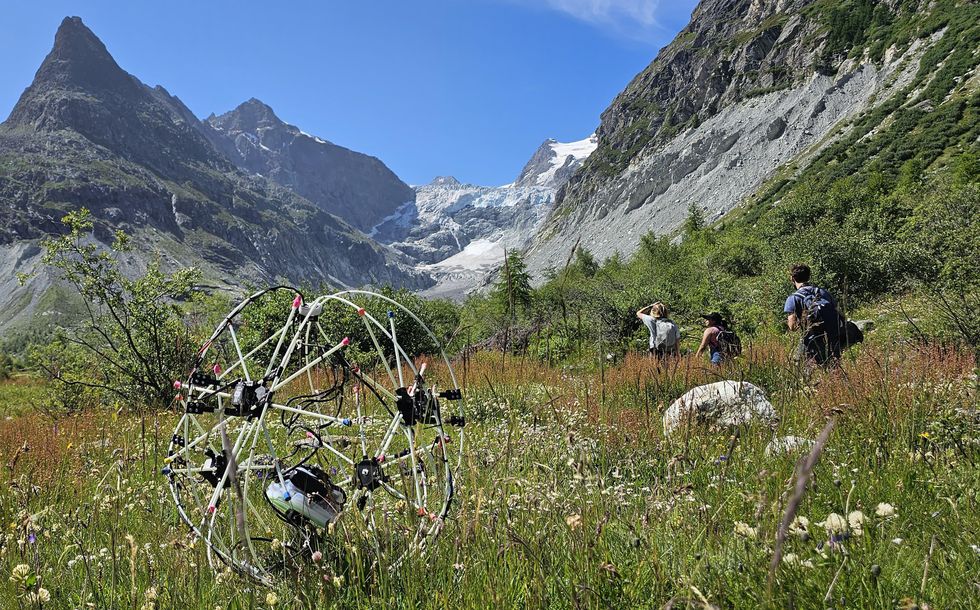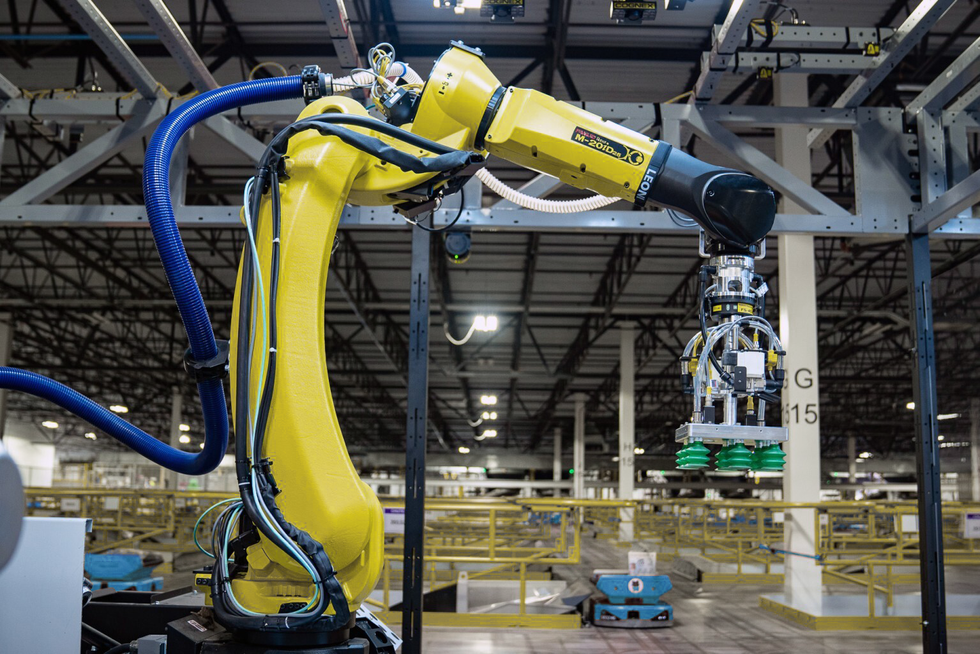About a decade ago, there was a lot of excitement in the robotics world around gecko-inspired directional adhesives, which are materials that stick without being sticky using the same van der Waals forces that allow geckos to scamper around on vertical panes of glass. They were used extensively in different sorts of climbing robots, some of them quite lovely. Gecko adhesives are uniquely able to stick to very smooth things where your only other option might be suction, which requires all kinds of extra infrastructure to work.
We haven’t seen gecko adhesives around as much of late, for a couple of reasons. First, the ability to only stick to smooth surfaces (which is what gecko adhesives are best at) is a bit of a limitation for mobile robots. And second, the gap between research and useful application is wide and deep and full of crocodiles. I’m talking about the mean kind of crocodiles, not the cuddly kind. But Flexiv Robotics has made gecko adhesives practical for robotic grasping in a commercial environment, thanks in part to a sort of robotic tongue that licks the gecko tape clean.
If you zoom way, way in on a gecko’s foot, you’ll see that each toe is covered in millions of hairlike nanostructures called setae. Each seta branches out at the end into hundreds of more hairs with flat bits at the end called spatulas. The result of this complex arrangement of setae and spatulas is that gecko toes have a ridiculous amount of surface area, meaning that they can leverage the extremely weak van der Waals forces between molecules to stick themselves to perfectly flat and smooth surfaces. This technique works exceptionally well: Geckos can hang from glass by a single toe, and a fully adhered gecko can hold something like 140 kilograms (which, unfortunately, seems to be an extrapolation rather than an experimental result). And luckily for the gecko, the structure of the spatulas makes the adhesion directional, so that when its toes are no longer being loaded, they can be easily peeled off of whatever they’re attached to.
Natural gecko adhesive structure, along with a synthetic adhesive (f).Gecko adhesion: evolutionary nanotechnology, by Kellar Autumn and Nick Gravish
Since geckos don’t “stick” to things in the sense that we typically use the word “sticky,” a better way of characterizing what geckos can do is as “dry adhesion,” as opposed to something that involves some sort of glue. You can also think about gecko toes as just being very, very high friction, and it’s this perspective that is particularly interesting in the context of robotic grippers.
This is Flexiv’s “Grav Enhanced” gripper, which uses a combination of pinch grasping and high friction gecko adhesive to lift heavy and delicate objects without having to squeeze them. When you think about a traditional robotic grasping system trying to lift something like a water balloon, you have to squeeze that balloon until the friction between the side of the gripper and the side of the balloon overcomes the weight of the balloon itself. The higher the friction, the lower the squeeze required, and although a water balloon might be an extreme example, maximizing gripper friction can make a huge difference when it comes to fragile or deformable objects.
There are a couple of problems with dry adhesive, however. The tiny structures that make the adhesive adhere can be prone to damage, and the fact that dry adhesive will stick to just about anything it can make good contact with means that it’ll rapidly accumulate dirt outside of a carefully controlled environment. In research contexts, these problems aren’t all that significant, but for a commercial system, you can’t have something that requires constant attention.
Flexiv says that the microstructure material that makes up its gecko adhesive was able to sustain 2 million gripping cycles without any visible degradation in performance, suggesting that as long as you use the stuff within the tolerances that it’s designed for, it should keep on adhering to things indefinitely—although trying to lift too much weight will tear the microstructures, ruining the adhesive properties after just a few cycles. And to keep the adhesive from getting clogged up with debris, Flexiv came up with this clever little cleaning station that acts like a little robotic tongue of sorts:
Interestingly, geckos themselves don’t seem to use their own tongues to clean their toes. They lick their eyeballs on the regular, like all normal humans do, but gecko toes appear to be self-cleaning, which is a pretty neat trick. It’s certainly possible to make self-cleaning synthetic gecko adhesive, but Flexiv tells us that “due to technical and practical limitations, replicating this process in our own gecko adhesive material is not possible. Essentially, we replicate the microstructure of a gecko’s footpad, but not its self-cleaning process.” This likely goes back to that whole thing about what works in a research context versus what works in a commercial context, and Flexiv needs its gecko adhesive to handle all those millions of cycles.
Flexiv says that it was made aware of the need for a system like this when one of its clients started using the gripper for the extra-dirty task of sorting trash from recycling, and that the solution was inspired by a lint roller. And I have to say, I appreciate the simplicity of the system that Flexiv came up with to solve the problem directly and efficiently. Maybe one day, it will be able to replicate a real gecko’s natural self-cleaning toes with a durable and affordable artificial dry adhesive, but until that happens, an artificial tongue does the trick.
How useful was this post?
Click on a star to rate it!
Average rating 0 / 5. Vote count: 0
No votes so far! Be the first to rate this post.
We are sorry that this post was not useful for you!
Let us improve this post!
Tell us how we can improve this post?




